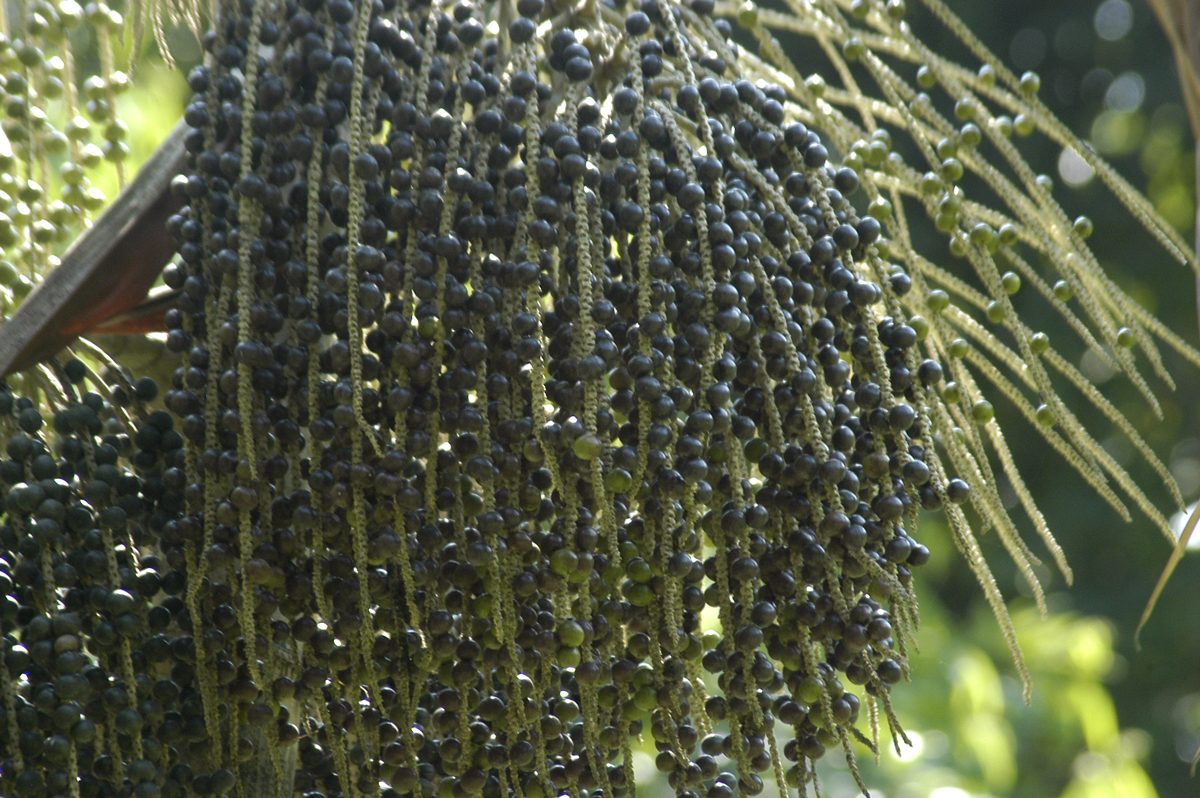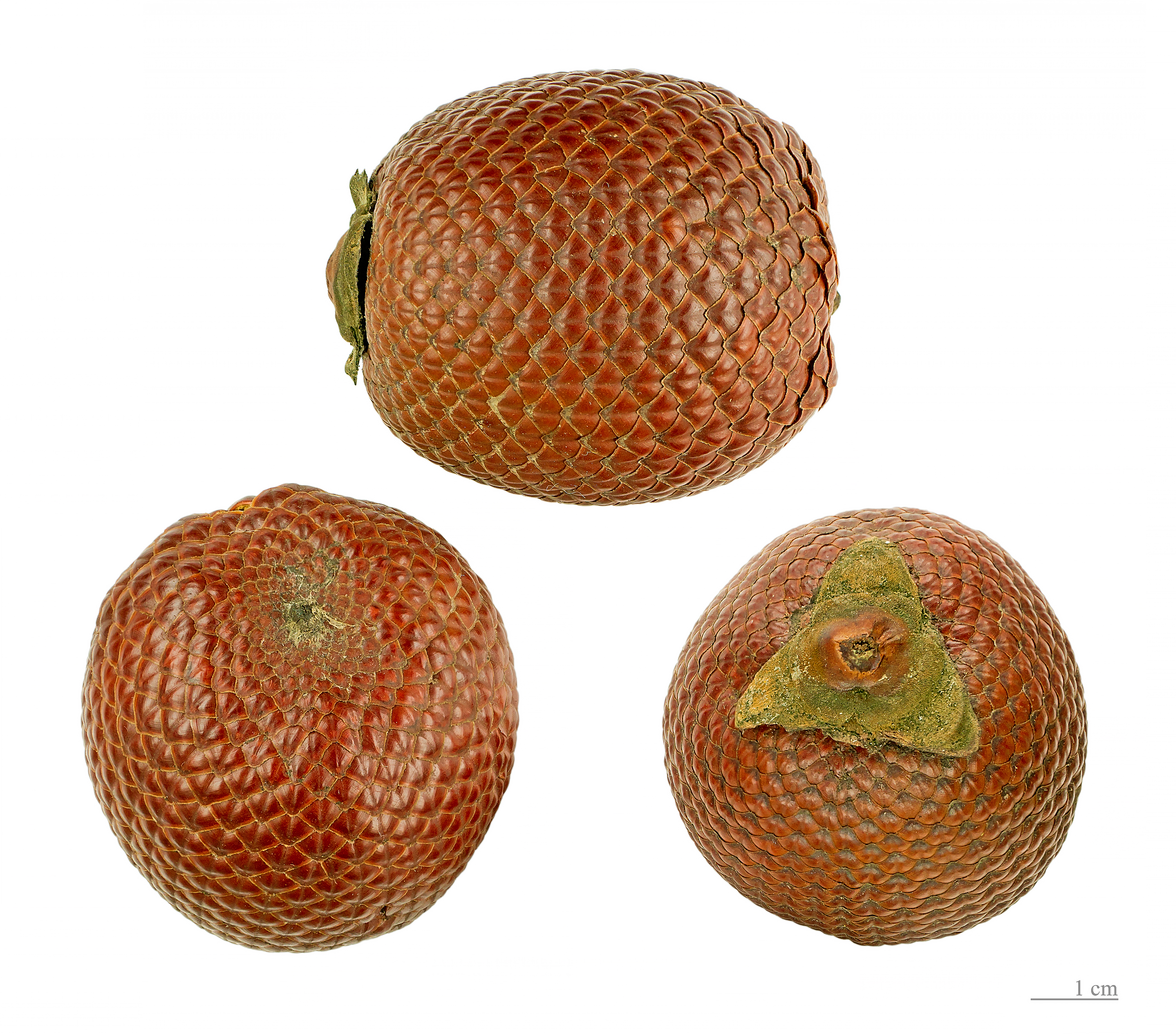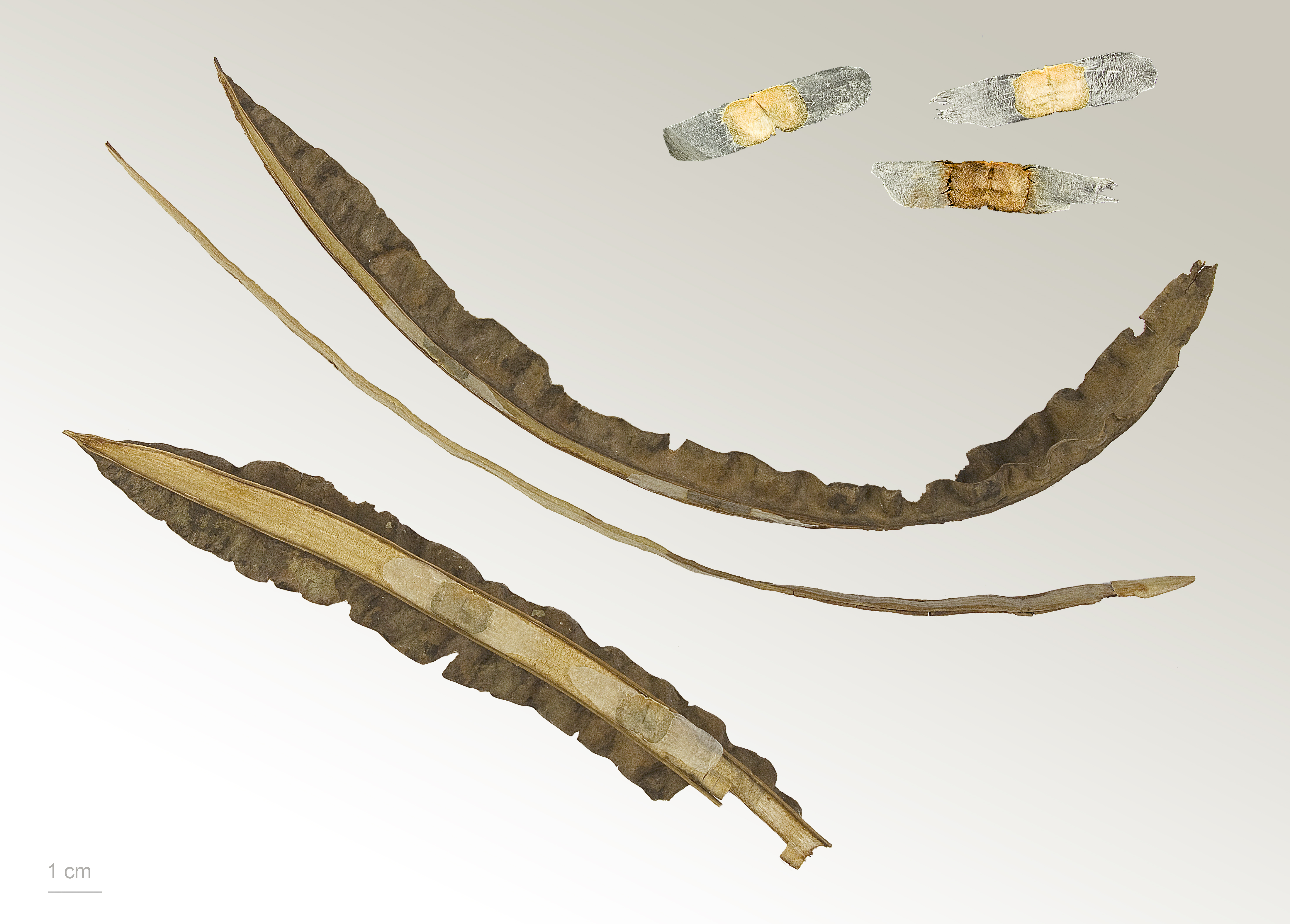|
Paramaribo Swamp Forests
The Paramaribo swamp forests (NT0149) is an ecoregion in the coastal plain of Suriname covering a strip of land that is almost always flooded by fresh waters. It transitions into saline mangrove swamps towards the coast, and into submontane forests towards the interior. Geography Location The Paramaribo swamp forests ecoregion is a long, narrow strip of land between the coastal mangroves and the foothills of the coastal mountains in the north of Suriname. Flora include seasonally flooded forests and permanently flooded swamp forests. It has an area of . Most of the population of Suriname lives near the ecoregion, and Paramaribo, the capital of the country, is in the ecoregion. Terrain The ecoregion extends across the north of Suriname from the border with Guyana along the Corantijn River to the border with French Guiana along the Marowijne River. Both Guyana and French Guiana also have elements of swamp forest. The flat coastal plain was formed from marine sediments in the Holoc ... [...More Info...] [...Related Items...] OR: [Wikipedia] [Google] [Baidu] |
Cola Creek
Cola Creek ( nl, Colakreek) is a blackwater creek in Suriname's Para District. The name refers to the colour of the water, which resembles that of Coca-Cola. On weekends many tourists visit the creek from Paramaribo as it is only a short drive away. The resort on the creek was built during World War II for the American soldiers stationed at Zanderij Zanderij is a village located in the northern part of Suriname, situated 50 kilometres south of the capital Paramaribo on the Southern East-West Link. The Johan Adolf Pengel International Airport is located near the village. On 7 June 1989, Sur .... See also * Coropina Kreek References Rivers of Suriname Para District {{Suriname-river-stub ... [...More Info...] [...Related Items...] OR: [Wikipedia] [Google] [Baidu] |
Açaí Palm
The açaí palm (, , from Nheengatu ''asai''), ''Euterpe oleracea,'' is a species of palm tree (Arecaceae) cultivated for its fruit (açaí berries, or simply açaí), hearts of palm (a vegetable), leaves, and trunk wood. Global demand for the fruit has expanded rapidly in the 21st century, and the tree is cultivated for that purpose primarily. The species is native to eastern Amazonia, especially in Brazil, mainly in swamps and floodplains. Açaí palms are tall, slender trees growing to more than tall, with pinnate leaves up to long. The fruit is small, round, and black-purple in color. The fruit became a staple food in floodplain areas around the 18th century, but its consumption in urban areas and promotion as a health food only began in the mid 1990s along with the popularization of other Amazonian fruits outside the region. Name The common name comes from the Portuguese adaptation of the Tupian word ', meaning "ruit thatcries or expels water". The importance of the fru ... [...More Info...] [...Related Items...] OR: [Wikipedia] [Google] [Baidu] |
Cyperus Giganteus
''Cyperus giganteus'' (also known as piripiri) is a perennial herbaceous plant. It belongs to the genus ''Cyperus''. Its native range extends from Jalisco in west-central Mexico as far south as Uruguay, and also grows on some islands in the Caribbean (Cuba, Hispaniola, Puerto Rico, Jamaica, and Trinidad). The species is sparingly naturalized in eastern Texas and southern Louisiana Louisiana , group=pronunciation (French: ''La Louisiane'') is a state in the Deep South and South Central regions of the United States. It is the 20th-smallest by area and the 25th most populous of the 50 U.S. states. Louisiana is borde .... References * giganteus Plants described in 1805 Flora of Mexico Flora of Central America Flora of Southern America Flora of the Caribbean Taxa named by Martin Vahl {{Cyperus-stub ... [...More Info...] [...Related Items...] OR: [Wikipedia] [Google] [Baidu] |
Leersia Hexandra
''Leersia hexandra'' is a species of grass known by the common names southern cutgrass, clubhead cutgrass, and swamp rice grass.''Leersia hexandra''. Pacific Island Ecosystems at Risk (PIER). It has a distribution. It is also an in many regions, sometimes becoming invasive, and it is an agricultural weed of various crops, especially |
Typha Domingensis
''Typha domingensis'', known commonly as southern cattail or cumbungi, is a perennial herbaceous plant of the genus '' Typha''. Distribution and habitat It is found throughout temperate and tropical regions worldwide. It is sometimes found as a subdominant associate in mangrove ecosystems such as the Petenes mangroves ecoregion of Yucatán. Uses In the Mesopotamian Marshes of southern Iraq, Khirret is a dessert made from the pollen of this plant. In Turkish folk medicine the female inflorescences of this plant and other ''Typha'' are used externally to treat wounds such as burns. Extracts of ''T. domingensis'' have been demonstrated to have wound healing properties in rat models. Water extracts of the fruit, female flower and male flower of ''Typha domingensis'' exhibit iron chelating activity as well as superoxide and nitric oxide scavenging activities. By contrast, only the fruit and female flower extracts were found to have alpha-glucosidase inhibitory activity. A part ... [...More Info...] [...Related Items...] OR: [Wikipedia] [Google] [Baidu] |
Triplaris Surinamensis
''Triplaris'' is a genus of plants in the family Polygonaceae. Ant tree is a common name for plants in this genus. The species are variously distributed in the Americas. Some species are used for lumber. They are dioecious pioneer species. Species and taxonomy Species include:The Plant List: A Working List of all Plant Species. Version 1. Published on the Internet; http://www.theplantlist.org/ (accessed 15 August 2012) *'' Triplaris americana'' L. *''Triplaris caracasana'' Cham. *''Triplaris cumingiana'' Fisch. & C.A.Mey. *''Triplaris dugandii'' Brandbyge *''Triplaris fulva'' Huber *'' Triplaris gardneriana'' Wedd. *''Triplaris melaenodendron'' (Bertol.) Standl. & Steyerm. *'' Triplaris moyobambensis'' Brandbyge *''Triplaris peruviana'' Fisch. & Meyer ex C.A. Meyer *''Triplaris punctata'' Standl. *''Triplaris purdiae'' Meisn. *''Triplaris purdiei'' Meisn. *''Triplaris setosa'' Rusby *''Triplaris vestita'' Rusby *''Triplaris weigeltiana ''Triplaris ... [...More Info...] [...Related Items...] OR: [Wikipedia] [Google] [Baidu] |
Mauritia Flexuosa
''Mauritia flexuosa'', known as the moriche palm, ''ité'' palm, ''ita'', ''buriti'', ''muriti'', ''miriti'' (Brazil), ''canangucho'' (Colombia), ''acho'' (Ecuador), or ''aguaje'' (Peru), is a Arecaceae, palm tree. It grows in and near swamps and other wet areas in tropical South America. ''Mauritia flexuosa'', a tree, can reach up to in height. The large leaves form a rounded crown. The flowers are yellowish and appear from December to April. The fruit, which grows from December to June, is a chestnut color and is covered with shiny scales. The yellow flesh covers a hard, oval nut. The seeds float, and this is the means by which the palm tree propagates. In natural populations, the tree reaches very high densities. Fruit Moriche palm fruit ("morete" in the Oriente (Ecuador), Oriente of Ecuador) is edible and used to make juice, jam, ice cream, a fermented "wine", desserts and snacks, requiring harvesting of more than 50 tonnes per day in Peru. The inflorescence buds are eaten ... [...More Info...] [...Related Items...] OR: [Wikipedia] [Google] [Baidu] |
Annona Glabra
''Annona glabra'' is a Tropics, tropical fruit tree in the family Annonaceae, in the same genus as the soursop and cherimoya. Common names include pond apple, alligator apple (so called because American alligators often eat the fruit), swamp apple, corkwood, bobwood, and monkey apple. The tree is native to Florida in the United States, the Caribbean, Central and South America, and West Africa. It is common in the Everglades. The ''A. glabra'' tree is considered an invasive species in Sri Lanka and Australia. It grows in swamps, is Halophyte, tolerant of saltwater, and cannot grow in dry soil. Description The trees grow to up to 12 m. They have narrow, gray trunks and sometimes grow in clumps. The leaf, leaves are ovate to oblong, each with an acute tip, 8–15 cm long and 4–6 cm broad with a prominent midrib. The upper surface is light to dark green. Leaves of the ''A. glabra'' are said to have a distinct smell, similar to green apples, that can distinguish it from man ... [...More Info...] [...Related Items...] OR: [Wikipedia] [Google] [Baidu] |
Chrysobalanus Icaco
''Chrysobalanus'' is a genus of evergreen perennial shrubs to small trees, described as a genus by Linnaeus in 1753. It is native to sub-tropical and tropical regions of Africa, Latin America, and Florida. ''Chrysobalanus'' attains a maximum height of 25 or 30 feet (8–10 m). It is found in coastal areas as a wild plant, and is frequently planted in gardens. It has a low-growing and sprawling habit. It can form dense stands and become invasive. The leaves are obovate or obcordate in outline, about 2in long, thick, glossy, and deep green in color. It has small white flowers, in axillary racemes or cymes, not too showy, but they have a dainty and sweet fragrance. This plant bears a damson-sized edible red pulpy fruit with a black and thin skin, resembles a large plum in appearance, being oval 1.5in long. The sweet fruits with white flesh, which is cottony and of insipid taste, adheres closely to the large oblong seed turn from creamy tones to dark-blue pleasing tasty peaches which ... [...More Info...] [...Related Items...] OR: [Wikipedia] [Google] [Baidu] |
Tabebuia Insignis
''Tabebuia'' is a genus of flowering plants in the family Bignoniaceae.Eberhard Fischer, Inge Theisen, and Lúcia G. Lohmann. 2004. "Bignoniaceae". pages 9-38. In: Klaus Kubitzki (editor) and Joachim W. Kadereit (volume editor). ''The Families and Genera of Vascular Plants'' volume VII. Springer-Verlag: Berlin; Heidelberg, Germany. The common name "roble" is sometimes found in English. ''Tabebuias'' have been called "trumpet trees", but this name is usually applied to other trees and has become a source of confusion and misidentification. ''Tabebuia'' consists almost entirely of trees, but a few are often large shrubs. A few species produce timber, but the genus is mostly known for those that are cultivated as flowering trees.David J. Mabberley. 2008. ''Mabberley's Plant-Book'' third edition (2008). Cambridge University Press: UK. ''Tabebuia'' is native to the American tropics and subtropics from Mexico and the Caribbean to Argentina. Most of the species are from Cuba and Hi ... [...More Info...] [...Related Items...] OR: [Wikipedia] [Google] [Baidu] |
Pterocarpus Officinalis
''Pterocarpus officinalis'', the dragonsblood tree, is a species of flowering plant in the family Fabaceae, native to southern Mexico, Central America, the Caribbean, and northern South America. It is typically found in coastal freshwater or slightly brackish habitats, in association with mangroves that occupy the more saline areas. Its timber is commercially traded. References officinalis ''Officinalis'', or ''officinale'', is a Medieval Latin epithet denoting organisms—mainly plants—with uses in medicine, herbalism and cookery. It commonly occurs as a specific epithet, the second term of a two-part botanical name. ''Officinali ... Flora of Southwestern Mexico Flora of Veracruz Flora of Southeastern Mexico Flora of Central America Flora of the Caribbean Flora of northern South America Flora of Ecuador Flora of Colombia Flora of North Brazil Flora of Northeast Brazil Plants described in 1763 Flora without expected TNC conservation status {{Dalbergieae-s ... [...More Info...] [...Related Items...] OR: [Wikipedia] [Google] [Baidu] |
Erythrina Fusca
''Erythrina fusca'' is a species of flowering tree in the legume family, Fabaceae. It is known by many common names, including purple coraltree, gallito, bois immortelle, bucayo, and the more ambiguous "bucare" and "coral bean". ''E. fusca'' has the widest distribution of any ''Erythrina'' species; it is the only one found in both the New and Old World. It grows on coasts and along rivers in tropical Asia, Oceania, the Mascarene Islands, Madagascar, Africa, and the Neotropics. The easy-to-grow and attractive flowering tree is cultivated as an ornamental shade and hedge plant. It is a common shade tree in cacao plantations. It attracts hummingbirds, which pollinate its flowers. ''E. fusca'' is the official flower of the Venezuelan state of Trujillo. Description ''E. fusca'' is a deciduous tree with spiny bark and light orange flowers. Its legume pods reach in length and contain dark brown seeds. The seeds are buoyant, allowing them disperse across oceans. The tree is h ... [...More Info...] [...Related Items...] OR: [Wikipedia] [Google] [Baidu] |



